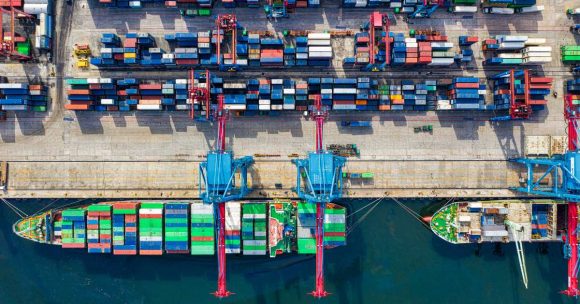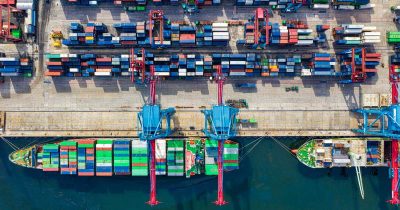The shipping and logistics industry are holding tight against the volatility of ocean spot rates. In its latest blog post, Xeneta, an ocean and air freight rate benchmarking and market analytics platform, asks the question: What can stop ocean freight container spot rates reaching pandemic levels?
Businesses have had to contend with the Red Sea crisis for nine months now, with no end in sight just yet.
Xeneta reports the average spot rates from the Far East to North Europe have risen to $7,897 per FEU (Forty-Foot Equivalent Unit) in July, reaching 53% of the pandemic peak of USD 14,783 in January 2022. It adds that spot rates for trades from the Far East to the US East Coast and US West Coast are even closer to their early 2022 peaks, at 72% and 79% respectively.
Protect supply chains
Shippers may be asking themselves: “Is this situation going to get worse?” Xenetra explains it is not likely that the industry will see freight rates like those during the COVID-19, but it also says, brace for it…”it cannot be ruled out completely.”
Businesses have had to pull out all the stops in recent months. Re-routing vessels, finding alternatives, switching to intermodal services to keep the supply chain moving, and still holding the helm steady by keeping costs stable.
So, just how are shippers adapting to rising spot rates and supply chain challenges to ensure the smooth operation of their businesses?
Xeneta gives some insight: “It is therefore completely understandable that a shipper’s sole focus must be to protect their individual supply chains and business interests. They will do whatever they can to achieve this, whether it is frontloading imports or paying premium rates to guarantee space for their cargo on board ships.”
The importance of the Red Sea in logistics
The Red Sea is a crucial corridor connecting the Mediterranean Sea, the Indian Ocean, and beyond. Its strategic location gives shippers access to Europe, Asia, and Africa. The Red Sea route is the natural sailing route between these regions.
Has there been any solution to a Red Sea alternative? Locate2u previously reported that the Port of Salalah in Oman has an answer. It has introduced a multi-modal service option as an alternative to re-routing around the Cape of Good Hope.
Latest bout of delays
Shipping line Maersk warned this week of shipping delays due to bad weather batters the southern coast of South Africa.
“This will impact vessel movement and operations. The worst impact is expected in Port Elizabeth. Vessels are expected to seek shelter/alter their course to avoid the impacted areas, please expect delays over the next few days,” Maersk says in an advisory on Monday, July 8.
Photo Credit: Canva
About the author
Sharl is a qualified journalist. He has over 10 years’ experience in the media industry, including positions as an editor of a magazine and Business Editor of a daily newspaper. Sharl also has experience in logistics specifically operations, where he worked with global food aid organisations distributing food into Africa. Sharl enjoys writing business stories and human interest pieces.











